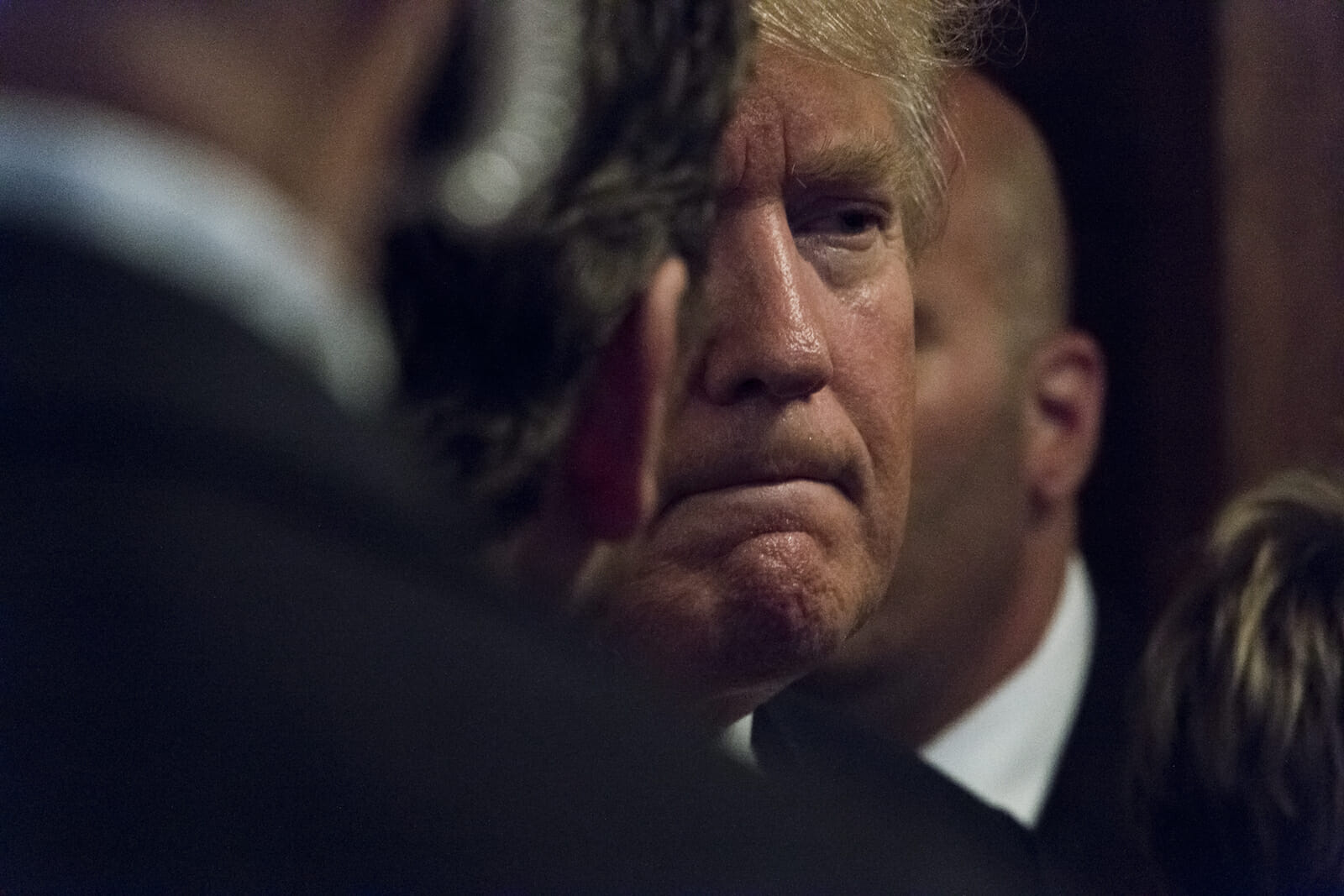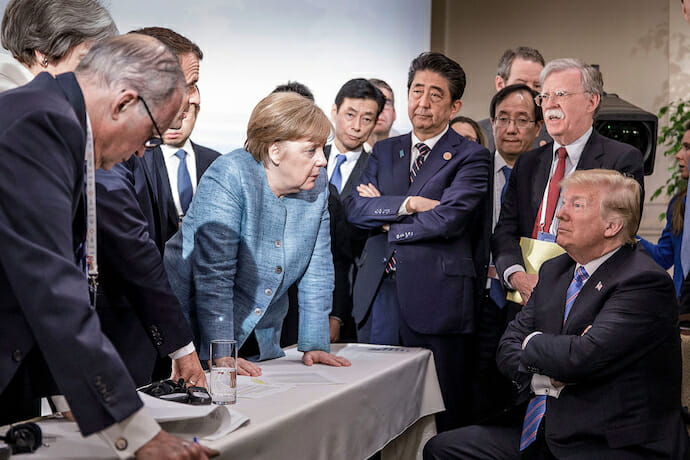
Trump’s Grand Strategy in Foreign Policy
Many political pundits believe that President Trump has no “grand strategy,” maintaining that he is either intellectually incapable of crafting and implementing such a strategy or that his modus operandi is simply to shoot from the hip and create a state of constant disruption. I disagree. Trump did not land in the White House because he failed to have a game plan to get there, nor has he hesitated to systematically follow through on his many campaign promises, which is obviously itself part of his strategy. It is no stretch at all to imagine that he and his brethren actually have a well-thought out strategy to achieve his objectives. What bewilders many of his opponents is that they may not know what those objectives are.
Trump’s foreign policy strategy naturally hinges on disruption, but upon closer inspection, how much of it can really be considered disruptive? If disruption may be understood as an attempt to prevent business as usual from occurring, much of what Trump is presiding over is nothing of the sort. For example, there has actually been a great deal of consistency between Obama and Trump’s general approach to foreign policy. They both wanted a reset with Russia, the maintenance of favorable relations with both Israel and Saudi Arabia, an expanded physical presence for NATO, and a solution to North Korea – it is just that Trump has not been afraid of upending the apple cart in the process, while Obama generally chose not to do so.
While Obama moaned about the Europeans not paying their fair share of NATO costs and chided China for its alleged theft of American intellectual property, his response was, in the end, tepid and ineffective. On what basis, then, is Trump’s robust response to both be criticized by his opponents in America? It is clear that the Europeans will not cough up 2% of GDP without being strong armed and it is equally clear that China will not change its ways on intellectual property theft or fair trade without an equally robust response.
So, following through on previously ineffective approaches to US foreign policy is clearly part of Trump’s grand strategy. North Korea is perhaps the best example of this in the foreign policy arena. While the ultimate outcome will remain uncertain for months and perhaps years to come, Trump has already achieved more in that regard than 70 years of previous US foreign policy. Moving the football on illegal immigration and achieving fair trade are additional worthy examples. While many will vociferously disagree with his tactics, Trump is getting things done, which is another pillar of the grand strategy. As he said during the campaign, as the world is increasingly marching to other countries’ tune, there is no time for political correctness, and he is right.

Trump’s strategy is clearly not about the art of the status quo. His approach to foreign policy should be viewed less as a zero-sum game and more like a leveling of the playing field. America has for far too long been carrying more than its fair share of bilateral and multilateral defense costs, and has gotten too little in return for its open trading platform, which has been taken advantage of by numerous countries. That is why the US has persistently negative trade balances with countries around the world. Of course, America has only itself to blame for that, but why should Trump be criticized for wanting to correct it? Doing so was never meant to feel very good to those nations that have been reaping an unbalanced benefit as a result, but asking nicely has not worked very well.
The current global political and economic architecture will remain a work-in-progress well past Trump’s tenure. Perhaps that is one important reason why Trump appears to be willingly dismantling many of the post-War institutions and agreements that America was, in the first instance, central to creating. He appears to believe that it is better to do so on America’s terms, rather than that of the emerging powers over time. It is only a question of time until some of the fossilizing, out-of-step post-war institutions that have failed to adapt with the times become less relevant with time. Similarly, inherently flawed agreements – such as the Joint Comprehensive Plan of Action and the Paris Agreement on Climate Change – deserve to be abandoned if they cannot be corrected to have more teeth and become more meaningful.
Trump is doing this to preserve America’s pre-eminent place in the world by making it stronger and better able to compete in the long-run, in an increasingly competitive world where a variety of the major players have not played by the rules. Whether the result of being outmaneuvered or simply by virtue of being inferior negotiators, Trump’s strategy is to come out of his corner swinging at all those countries that have been taking advantage of America’s good graces over many years. The list is a long one of friends and foes alike.
So, to all those who maintain that Trump has no grand strategy, they are simply wrong. It is a combination of disruption on steroids, tossing aside political correctness, following through on campaign promises, seeking fair trade and fair terms to agreements, and preserving America’s place in the world by positioning it to remain strong and influential well into the future. There will be plenty of pain to go around in the process, and it is bound to ruffle a lot of feathers along the way, but it is a small price to pay to set things right.
It is clear that America cannot remain competitive and agile while continuing to commit more than its fair share of resources, allowing its intellectual property to be stolen, permitting the rule of law to be wantonly broken, and being party to agreements that are inherently flawed. That is what many of his critics fail to acknowledge, and they do not know what to make of Trump since his approach is so very different than virtually any other American president. While history may be unkind to Trump’s tactics, his instincts will undoubtedly prove to be right on the mark.

